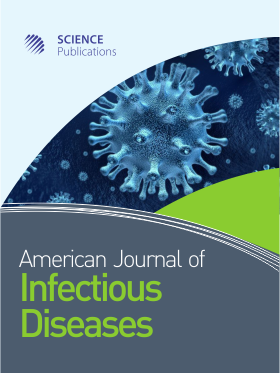Effect of Aqueous Extract of Aegle marmelos Fruit on Adherence and β-Lactam Resistance of Enteropathogenic Escherichia coli by Down Regulating Outer Membrane Protein C
- 1 University of Madras, India
Abstract
Problem statement: Enteropathogenic Escherichia Coli (EPEC) continue to be a major health problem, leading to death due to diarrhea, predominantly in children below the age of five. Due to evolution of multi drug resistance in EPEC and side effects caused to host by antibiotics necessitated a search for alternative medicines from medicinal plants. One such medicinal plant used since ancient times to cure diarrhea is Aegle marmelos. This study was done to investigate the effect of aqueous extract of Aegle marmelos fruit (AEAM) on outer membrane protein C (OmpC) of EPEC, which plays a key role in adherence and antibiotic resistance. Approach: Fixation of minimum inhibitory concentration. In presence and absence of AEAM antibiotic susceptibility test was performed. Expression analysis of OmpC and OmpF was carried out by RT-PCR of EPEC in presence and absence of AEAM. Morphological changes of EPEC in presence and absence of AEAM were analyzed by TEM. In infant mouse ileal loop model, histological analysis, adherence of bacteria to ileal loops and Western blotting for caspase-3 and Hsp70 were done. Results: OmpC (~42kDa) a porin, played an important role in selective transport of nutrients and also acted as an adhesin, whereas OmpF (~38kDa) is also a porin which is non selective. Susceptibility of EPEC to β-lactam antibiotics in presence of AEAM can be attributed to down regulation of OmpC and upregulation of OmpF. The changes in Omp expression also triggered morphological changes in EPEC. Histology and western blot of Hsp70 and Caspase-3 in rat ileal loop confirmed the effect of AEAM on attenuating the virulence of EPEC by preventing its infection due to loss of adherence. Loss of adherence was due to morphological changes and down regulation of OmpC in EPEC. Conclusion: From this study, we concluded that the protection offered by AEAM against EPEC was due to down regulation of OmpC, leading to loss of adherence and up regulation of OmpF, which allowed the entry of β-lactam antibiotics into bacteria. Hence, AEAM, along with β-lactam antibiotics can be used in treatment of EPEC infections.
DOI: https://doi.org/10.3844/ajidsp.2009.154.162

- 6,083 Views
- 4,031 Downloads
- 8 Citations
Download
Keywords
- Porins
- RT-PCR
- OmpF
